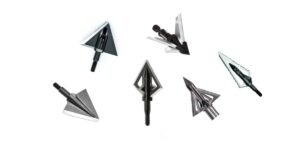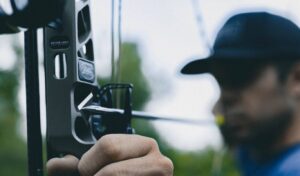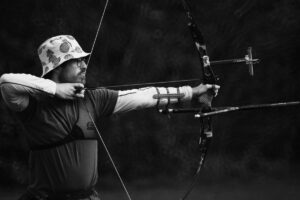Think deer decoys are nothing more than a hunter’s gimmick? Well, let’s reevaluate.
You’re out there in the great wide open, tirelessly tracking and stalking, but the elusive deer always seem to outwit you.
What you might be missing is a clever bit of trickery: the art of deception.
Yes, deer are intelligent, but they’re also creatures of habit and instinct.
Contents (Jump to Topic)
ToggleLet’s explore more.
Key Takeaways:
– Deer decoys are a hunter’s secret weapon, used to lure deer during hunting season.
– Buck decoys, with their dominant and territorial nature, attract other bucks, enhancing the chances of a successful hunt.
– Doe decoys have a dual appeal, enticing bucks as potential mates and does as fellow herd members.
– The choice between buck or doe decoys hinges on the hunting strategy, location, and the unique dynamics of the local deer population.
Popular Deer Decoys
Decoys serve as a beacon to attract deer attention, and your choice of decoy material can significantly influence your success.
Plastic decoys are lightweight and easy to transport, while fabric options offer a more realistic texture.
Taxidermy mounts, although heavier, provide the ultimate level of realism. To me, that sounds like a pretty good idea and if I had an old mount I would give it a try.
Don’t skimp on quality if you opt for a traditional 3-D buck decoy. There are terrible decoys on the market, and poor makes produce terrible in-the-field results.
I like Dave Smith Decoys, Flambeau, and I’ve had great success with Primos’ Scar Deer Decoy
Buck Decoys
Buck decoys provide a unique advantage, mainly by attracting dominant bucks looking for a fight.
This competitive nature can bring bucks within your shooting range, boosting your chances of hunting success.
Buck decoys are particularly effective when you’re hunting in areas with a high buck-to-doe ratio.
The illusion of an intruding buck stirs the instinct to defend territory, drawing deer out for a closer inspection.
Doe Decoys
When it comes to using doe decoys effectively, understanding the subtleties can significantly improve your hunting success rate.
Their realistic appearance can be a magnet for attracting dominant bucks, especially during the rut.
Position your decoy with precision, ensuring it’s visible from afar.
Don’t just drop it in the brush; place it in an open area where it can be easily seen. Its silhouette should stand out against the background.
Add a touch of doe estrus scent for that extra appeal – but be careful, overdoing it might spook the deer.
Be patient and blend in with the surroundings. The goal is to make the buck focus on the decoy and forget about everything else.
Buck Vs Doe Decoys: Making the Choice
It all comes down to getting into the head of those whitetails and syncing that with your hunting tactics.
When we talk about pre-rut and rut seasons, a buck decoy can be a real game changer.
Why? Well, it taps into that instinctive need for a dominant buck to confront any potential rivals.
It’s all about visual impact and stirring up some of that natural aggression. But remember, this might scare off the less dominant, younger bucks.
Now, let’s talk doe decoys. These are your all-season MVPs.
Especially during the rut, they’re like magnets to bucks on the prowl for a mate.
A doe decoy sets up a less intimidating scene, drawing in bucks of all sizes and ranks.
More often than not, this approach opens up more shots than you’d get with a buck decoy.
Strategic Decoy Placement
Alright, let’s talk about the nuanced art of decoy positioning.
It’s not just slapping a decoy out there and hoping for the best. It’s about crafting a scenario that speaks ‘deer’.
First things first, always be mindful of the wind direction and how visible your setup is from a deer’s point of view.
- Always position the decoy within your effective shooting range for a clear shot.
- Consider your dominant hand in positioning; for right-handed shooters, the shot area should be to the right.
- Align both your decoy and stand or blind according to your shooting hand (right or left).
- Don’t assume deer will approach the decoy head-on; set it up anticipating their movement.
- Remember, a buck typically tries to approach a rival (or decoy) for a cheap shot from the side to avoid direct confrontation.
- Bucks usually circle and flank the decoy, not approach it head-on.
- Position the decoy quartering away from you, allowing for an optimal shooting angle.
- This setup increases the chances of a broadside to quartering away shot, reducing the deer’s focus on you and your position.
Scent Control
Let’s get one thing straight – scent control is absolutely critical in this game. Always position your decoys upwind from where you expect your prey to approach.
Why? Because if you place it downwind and a savvy buck decides to circle around, chances are he’s going to pick up your scent instead of focusing on the decoy.
That’s a situation you definitely want to avoid.
Now, here’s something I do every single time I set up a decoy: give it a good spray down with a scent eliminator.
It’s a simple step, but it makes a world of difference. And when it comes to storing your decoy, be smart about it.
You want to keep it as free from artificial scents as possible – that means away from the oil and gas smells of your shop or garage.
My go-to solution? Store it in its own bag or container.
Better yet, keep it outside if you can, but make sure it’s protected from the elements to prevent wear and tear.
Deer Attractants
Using scents adds an extra layer of realism to your decoy setup.
It’s about creating a scenario that’s as close to the real thing as possible.
Deer rely heavily on their sense of smell, so by introducing the right scent into the equation, you’re speaking their language.
Scents can trigger instinctual reactions in deer, drawing them closer to your decoy.
Importance of Wind Direction
Even though your decoy may be perfectly positioned and realistically animated, ignoring the wind direction can quickly ruin your hunting efforts.
Understanding wind direction is vital, as deer rely heavily on their sense of smell for survival.
You want to be downwind of the deer. What does that mean, exactly? You need the wind blowing from the deer towards you, not the other way around.
Before you Go…
And there you have it, folks – your crash course in deer decoys.
We’ve covered everything from choosing the right decoy and perfecting your setup to mastering scent control and understanding wind direction.
Remember, a well-thought-out decoy strategy can be the key to your hunting success.
So take these tips, apply them in the field, and see the difference for yourself.
Thanks for joining me on this adventure.
Stay sharp, ethical, and may your hunts be fruitful.
For more insights and stories from the great outdoors, keep visiting Bowaddicted.com. Happy hunting!












